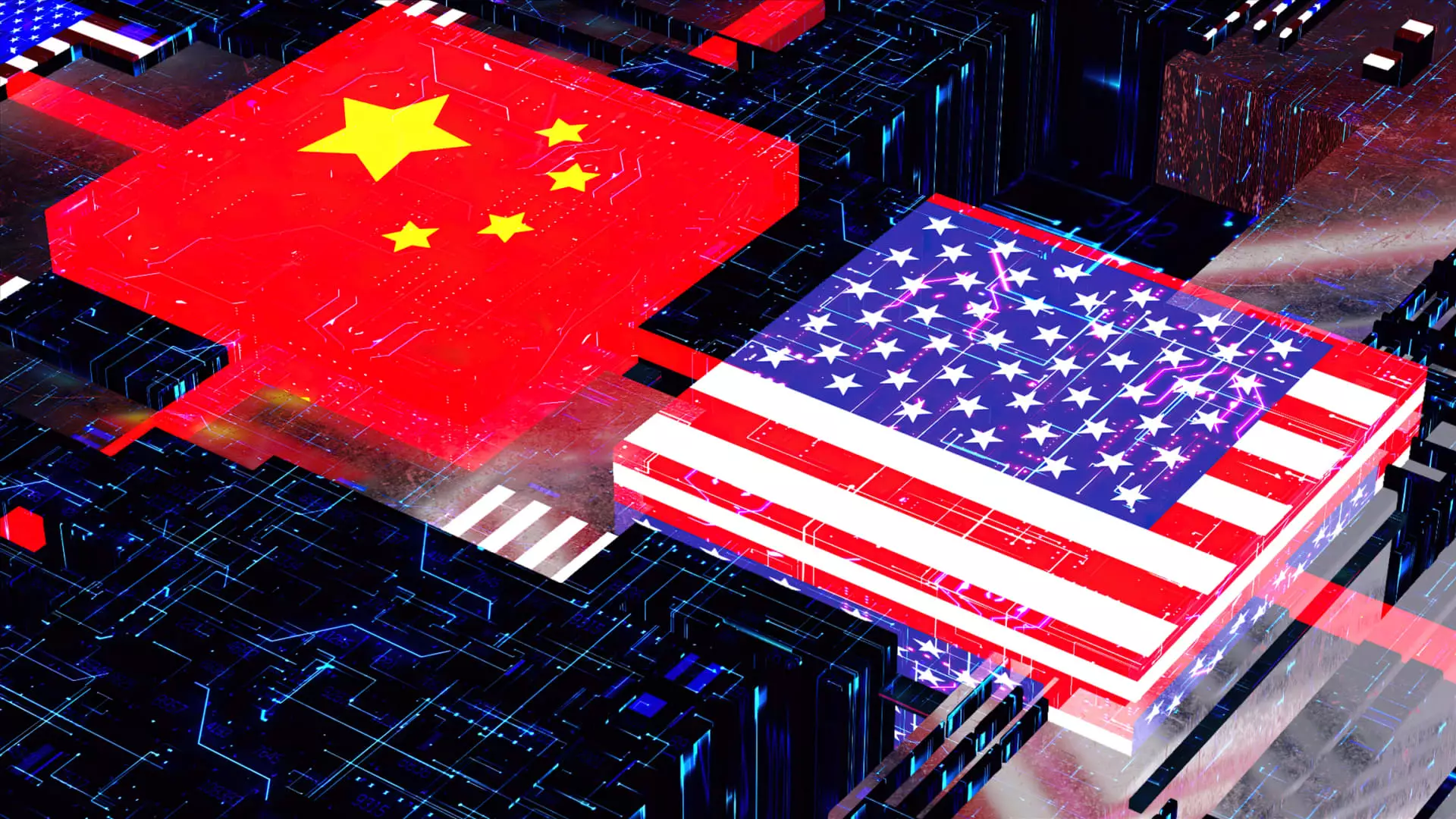It’s hard to find a silver lining in the recent earnings reports of major semiconductor companies—a stark contrast to the previous optimism surrounding the tech sector. The uncertainty surrounding U.S. tariff policies and escalating export restrictions on China has created a quagmire for chip manufacturers, leading to a frustratingly opaque business environment. Not only does this instability threaten future earnings and growth, but it also reflects a disturbing trend of leveraging technology as a political pawn. Companies are scrambling to navigate the tumultuous waters flooded by shifting regulations, and the impact is painfully apparent.
Trapped Between Tariffs and Technology
The key takeaway from recent earnings calls is clear: the semiconductor industry is plagued by indecision. Executives from leading firms like AMD and Super Micro have expressed significant concern about future revenue due to these export restrictions. AMD recently forecasted a staggering $1.5 billion revenue drop for its fiscal year, attributed directly to AI chip export limitations towards China. This misalignment of expectations and realities not only impacts stock values but also jeopardizes jobs and innovation in the industry.
One can’t help but question the wisdom of using cutthroat tariffs to “protect” domestic technological advancements. These actions could serve to insulate American companies in the short term, but as global supply chains become increasingly interconnected, it seems shortsighted. Executive comments from companies like Super Micro further illuminate the situation: they’ve opted not to provide guidance for their next fiscal year until the “visibility” of their market becomes clearer. One must ask, when did the world’s leading technology firms become so unsure of their path forward?
Capitalizing on AI: The Double-Edged Sword
Amidst the swirling uncertainty, there’s a paradoxical glimmer of hope generated by the increasing investment in artificial intelligence (AI) technologies; major tech players like Microsoft and Amazon continue to pour capital into data centers and cloud-computing infrastructure. But is this enthusiasm justified? Recently, analysts have pointed out a concerning over-reliance on AI as new chip technologies are born from a mix of hope and apprehension. The question arises: are companies rushing to innovate in the AI field out of genuine demand, or merely to keep up with the frantic pace set by their competitors?
The dilemma is exacerbated by American companies’ struggle against an innovative rise in homegrown technologies from China. With competitors like Huawei developing alternatives and Chinese firms launching their own high-performing AI models, the stakes have never been higher. The burst of confidence from U.S. executives—like Nvidia’s CEO Jensen Huang proclaiming the monumental potential of the Chinese AI market—underscores the tension brewing beneath the surface. However, relying solely on the mythologizing of the AI market may lead to more crumbling dreams if the market conditions are misassessed.
Market Indicators Reveal a Dismal Prediction
The VanEck Semiconductor ETF is yet another sobering indicator of the underlying turmoil in the sector, shedding nearly 12% since the beginning of the year. Add to that the news of companies like Marvell delaying their investor days, and it is abundantly clear that an air of conservatism has settled over the industry. Analysts are left scratching their heads, struggling to decipher the various signals of demand amidst an unpredictable climate of macroeconomic factors and trade policy shifts.
Global technology analyst Ben Barringer’s candid assessment of the environment emphasizes this complexity. As companies pull back, opting for a “wait and see” approach rather than forging ahead with bold initiatives, the future looks increasingly murky. This erosion of confidence generates a precarious cycle: the less clarity executives have, the less likely they are to invest in the future, which in turn leads to stagnation and diminished competitive edges.
Racing Toward the Future: A Call to Action
While some industry leaders advocate for aggressive competition and innovation, the specter of restrictive trade practices looms large. Jensen Huang’s fiery entreaty for the United States to embrace competition, rather than shy away from it, reveals a pivotal moment for the semiconductor sector. However, it raises a pressing question: will policymakers listen, or will they continue to stifle innovation through protective measures?
It is time for an introspective look within the semiconductor industry, weighing the values of competition against the pitfalls of becoming embroiled in geopolitical power struggles. As the race unfolds, the onus lies on American firms not only to innovate but also to advocate for a more open and collaborative global market. This conundrum holds the potential for both exploitation and opportunity—will the U.S. enable a thriving semiconductor sector or risk its stagnation in the midst of chaos? The future is uncertain, but one thing remains abundantly clear: the implications of today’s decisions will ripple through the industry’s fabric for years to come.

Leave a Reply